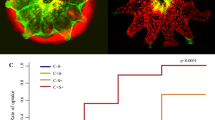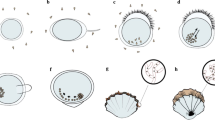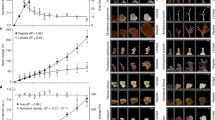Abstract
Coral reef symbioses are well-established models for studying multi-level networks of species interactions that provide nutritional benefits to partners. While the contributions of endosymbionts to cnidarian hosts have been extensively documented, relatively little is known about how exosymbionts contribute to nutrient cycling in coral reef cnidarians. We investigated exosymbiotic sources of ammonia and their contributions to physiological processes in Caribbean corkscrew sea anemones Bartholomea annulata. In laboratory experiments, anemones absorbed ammonia from seawater, which significantly enhanced the mitotic index of their endosymbiotic microalgae Symbiodinium, while anemone shrimp presence alone had no effect. Anemone shrimps excreted ammonia at much slower rates than anemones were able to absorb it, indicating that shrimp alone were not able to meet host nitrogen demand. Client fishes excreted ammonia ~10× more rapidly than did associated shrimps. On Caribbean coral reefs, anemone shrimps attract diverse client fishes through their parasite-cleaning behavior; these fishes excrete substantial ammonia near anemones while being cleaned. Exosymbiotic anemone shrimps thus may provide nutritional benefits to host anemones and microalgae indirectly, through their attraction of nitrogen-excreting fishes. This multi-level mutualistic network facilitates tight nutrient cycling among diverse species belonging to several phyla on coral reefs. While we assessed the rates and benefits of nutrient transfer under laboratory conditions, further research is needed to quantify the contributions of ammonia and other nutrients from client fishes through cleaner shrimps to host sea anemones in the field.




Similar content being viewed by others
References
Achituv Y, Mizrahi L (1996) Recycling of ammonium within a hydrocoral (Millepora dichotoma)-zooxanthellae-cirripede (Savignium milleporum) symbiotic association. Bull Mar Sci 58:856–860
Allgiers JE, Layman CA, Mumby PJ, Rosemund AD (2014) Consistent nutrient storage and supply mediated by diverse fish communities in coral reef ecosystems. Global Change Biol 20:2459–2472
Battey JF, Patton JS (1987) Glycerol translocation in Condylactis gigantea. Mar Biol 95:37–46
Briones-Fourzán P, Pérez-Ortiz M, Negrete-Soto F, Barradas-Ortiz C, Lozano-Álvarez E (2012) Ecological traits of Caribbean sea anemones and symbiotic crustaceans. Mar Ecol Prog Ser 470:55–68
Bshary R (2003) The cleaner wrasse, Labriodes dimidiatus, is a key organism for reef fish diversity at Ras Mohammed Nation Park. Egypt J Anim Ecol 72:169–176
Bunkley-Williams L, Williams EH (1998) Ability of Pederson cleaner shrimp to remove juveniles of the parasitic cymothiod iospod, Anilocra haemuli, from the host. Crustaceana 71:862–869
Chadwick NE, Ďuriš Z, Horká I (2008) Biodiversity and behavior of shrimps and fishes symbiotic with sea anemones in the Gulf of Aqaba, northern Red Sea. In: Por FD (ed) Aqaba-Eilat, the improbable gulf: environment, biodiversity, and preservation. Magnes Press, Hebrew University, Jerusalem, pp 209–223
Chadwick-Furman NE, Nir I, Spiegel M (2000) Sexual reproduction in the tropical corallimorpharian Rhodactis rhodostoma. Invert Biol 119:361–369
Cheney KL, Coté IM (2001) Are Caribbean cleaning symbioses mutualistic? Costs and benefits of visiting cleaning stations to longfin damselfish. Anim Behav 62:927–933
Cleveland A, Verde EA, Lee RW (2011) Nutritional exchange in a tropical tripartite symbiosis: direct evidence for the transfer of nutrients from anemonefish to host anemone and zooxanthallae. Mar Biol 158:589–602
Day RJ (1994) Algal symbiosis in Bunodeopsis: sea anemones with “auxiliary” structures. Biol Bull 186:182–192
Dixon AK, Needham D, Al-Horani FA, Chadwick NE (2014) Microhabitat use and photoacclimation in the clownfish sea anemone Entacmaea quadricolor. J Mar Biol Assoc UK 94:473–480
Fitt WK (2000) Cellular growth of host and symbiont in a cnidarian-zooxanthellar symbiosis. Biol Bull 189:110–120
Fitt WK, Cook CB (2001) The effects of feeding or addition of dissolved inorganic nutrients in maintaining the symbiosis between dinoflagellates and a tropical marine cnidarian. Mar Biol 139:507–517
Godinot C, Chadwick NE (2009) Phosphate excretion by anemonefish and uptake by giant sea anemones: demand outstrips supply. Bull Mar Sci 85:1–9
Godwin J, Fautin DG (1992) Defense of host actinians by anemonefishes. Copeia 3:902–908
Grutter AS (2003) Cleaner fish drives local fish diversity on coral reefs. Curr Biol 13:64–67
Hattori A (2005) High mobility of the protandrous anemonefish Amphiprion frenatus: non-random pair formation in limited shelter space. Ichthyol Res 52:57–63
Hirose Y (1985) Habitat, distribution and abundance of coral reef sea-anemones (Actiniidae and Stichodactylidae) in Sesoko Island, Okinawa, with notes of expansion and contraction behavior. Galaxea 4:113–127
Hoegh-Guldberg O (2006) The population dynamics of symbiotic zooxanthallae in the coral Pocillopora damicornis exposed to elevated ammonium (NH4 +Cl) concentrations. Pac Sci 48:263–272
Hoegh-Guldberg O, McCloskey LR, Muscatine L (1987) Expulsion of zooxanthellae by symbiotic cnidarians from the Red Sea. Coral Reefs 5:201–204
Holbrook SJ, Schmitt RJ (2005) Growth, reproduction and survival of a tropical sea anemone (Actinaria): benefits of hosting anemonefish. Coral Reefs 24:67–73
Holmlund CM, Hammer M (1999) Ecosystem services generated by fish populations. Ecol Econ 29:253–268
Hubbell SP (1997) A unified theory of biogeography and relative species abundance and its application to tropical rain forests and coral reefs. Coral Reefs 16:S9–S21
Huebner LK, Chadwick NE (2012a) Reef fishes use sea anemones as visual cues for cleaning interactions with shrimp. J Exp Mar Biol Ecol 416–417:237–242
Huebner LK, Chadwick NE (2012b) Patterns of cleaning behaviour on coral reef fish by the anemoneshrimp Ancylomenes pedersoni. J Mar Biol Assoc UK 92:1557–1562
Huebner LK, Dailey B, Titus BM, Khalaf M, Chadwick NE (2012) Host preference and habitat segregation among Red Sea anemonefish: effects of sea anemone traits and fish life stage. Mar Ecol Prog Ser 464:1–15
Hughes TP (1994) Catastrophes, phase shifts, and large-scale degradation of a Caribbean coral reef. Science 265:1547–1551
Jeffrey SW, Humphrey GF (1975) New spectrometric equations for determining chlorophylls a, b, c1 and c2 in higher plants, algae, and natural phytoplankton. Biochem Physiol Pflanzen 167:191–194
Johannes RE, Wiebe WJ, Crossland CJ, Rimmer DW, Smith SV (1983) Latitudinal limits of coral reef growth. Mar Ecol Prog Ser 11:105–111
Johnson WS, Ruben P (1988) Cleaning behavior of Bodianus rufus, Thalassoma bifasciatum, Gobiosoma evelynae, and Periclimenes pedersoni along a depth gradient at Salt River Submarine Canyon. St Croix Environ Biol Fish 23:225–232
Kuguru B, Winters G, Beer S, Santos SR, Chadwick NE (2007) Adaptation strategies of the corallimorpharian Rhodactis rhodostoma to irradiance and temperature. Mar Biol 151:1287–1298
LaJeunesse T (2002) Diversity and community structure of symbiotic dinoflagellates from Caribbean coral reefs. Mar Biol 141:387–400
Lee RW, Childress JJ (1994) Assimilation of inorganic nitrogen by marine invertebrates and their chemoautotrophic and methanotrophic symbionts. Appl Environ Microbiol 60:1852–1858
Linton DM, Warner GF (2003) Biological indicators in the Caribbean coastal zone and their role in integrated coastal management. Ocean Coast Manag 46:261–276
Lipshultz F, Cook CB (2002) Uptake and assimilation of 15N-ammonium by the symbiotic sea anemones Bartholomea annulata and Aiptasia pallida: conservation versus recycling of nitrogen. Mar Biol 140:489–502
Mahnken C (1972) Observations on cleaner shrimps of the genus Periclimenes. Bull Nat Hist Mus Los Angeles County 14:71–83
McCammon AM, Brooks WR (2014) Protection of host anemones by snapping shrimps: a case for symbiotic mutualism? Symbiosis 63:71–78
McCammon A, Sikkel P, Nemeth D (2010) Effects of three Caribbean cleaner shrimps on ectoparasitic monogeneans in a semi-natural environment. Coral Reefs 29:419–426
Meyer JL, Schultz ET (1985) Migrating haemulid fishes as a source of nutrients and organic matter on coral reefs. Limnol Oceanogr 30:146–156
Mitchell JS, Dill LM (2005) Why is group size correlated with the size of the host anemone in the false clown anemonefish? Can J Zool 83:372–376
Mokady O, Loya Y, Lazar B (1998) Ammonium contribution from boring bivalves to their coral host—a mutualistic symbiosis? Mar Ecol Prog Ser 169:295–301
Muller-Parker G (1987) Seasonal variation in light-shade adaption of natural populations of the symbiotic sea anemone Aiptasia pulchella (Carlgren, 1943) in Hawaii. J Exp Mar Biol Ecol 112:165–183
Muller-Parker G, McCloskey LR, Hoegh-Guldberg O, McAuley PJ (1994) Effect of ammonium enrichment on animal and algal biomass of the coral Pocillopora damicornis. Pac Sci 48:273–283
Muscatine L (1980) Uptake retention and release of dissolved inorganic nutrients by marine alga-invertebrate associations. In: Cook CB (ed) Cellular interaction in symbiosis and parasitism. Ohio State University Press, Columbus, pp 229–243
Muscatine L, D’Elia CF (1978) The uptake, retention, and release of ammonium by reef corals. Limnol Oceanogr 23:725–734
Muscatine L, Porter PW (1977) Reef corals: mutualistic symbioses adapted to nutrient-poor environments. Bio Sci 27:454–460
Nagelkerken IA, Bothwell J, Nemeth RS, Pitt JM, van der Velde G (2008) Interlinkage between Caribbean coral reefs and seagrass beds through feeding migrations by grunts (Haemulidae) depends on habitat accessibility. Mar Ecol Prog Ser 368:155–164
Nelsen MW (2008) Population dynamic modeling of the corkscrew sea anemone Bartholomea annulata on Caribbean coral reefs. M.Sc. Thesis, Auburn University, USA
Porat D, Chadwick-Furman NE (2004) Effects of anemonefish on giant sea anemones: expansion behavior, growth and survival. Hydrobiol 530:513–520
Porat D, Chadwick-Furman NE (2005) Effects of anemonefish on giant sea anemones: ammonium uptake, zooxanthella content and tissue regeneration. Mar Freshw Behav Physiol 38:43–51
Poulin R, Grutter A (1996) Cleaning symbiosis: proximate and adaptive explanations. Bioscience 47:512–517
Ricciardi F, Boyer M, Ollerton J (2010) Assemblage and interaction structure of the anemonefish-anemone mutualism across the Manado region of Sulawesi, Indonesia. Environ Biol Fish 87:333–347
Roopin M, Chadwick NE (2009) Benefits to host sea anemones from ammonia contributions of resident anemonefish. J Exp Mar Biol Ecol 370:27–34
Roopin M, Henry RP, Chadwick NE (2008) Nutrient transfer in a marine mutualism: patterns of ammonia excretion by anemonefish and uptake by giant sea anemones. Mar Biol 154:547–556
Roopin M, Thornhill DJ, Santos SR, Chadwick NE (2011) Ammonia flux, physiological parameters, and Symbiodinium diversity in the anemonefish symbiosis on Red Sea coral reefs. Symbiosis 53:63–74
Schmitt RJ, Holbrook SJ (2000) Habitat-limited recruitment of coral reef damselfish. Ecology 81:3479–3494
Sikkel PC, Fuller CA, Hunter W (2000) Habitat/sex differences in time at cleaning stations and ectoparasite loads in a Caribbean reef fish. Mar Ecol Prog Ser 193:191–199
Sikkel PC, Cheney KL, Côté IM (2004) In situ evidence for ectoparasites as a proximate cause of cleaning interactions in reef fish. Anim Behav 68:241–247
Sikkel PC, Herzleib SE, Kramer DL (2005) Compensatory cleaner-seeking behavior following spawning in female yellowtail damselfish. Mar Ecol Prog Ser 296:1–11
Silvano RAM, Tibbetts IR, Grutter AS (2012) Potential effects of fishing on cleaning interactions in a tropical reef. Coral Reefs 31:1193–1198
Sluka R, Chiappone M, Sullivan KM, DeGarine-Wichatitsky M (1997) Benthic habitat characterization and space utilization by juvenile epinepheline groupers in the Exuma Cays Land and Sea Park, Central Bahamas. In: Proceedings of the 45th Gulf Caribbean Fish Institute, vol 45. pp 23–36
Smith GJ (1986) Ontogenetic influences on carbon flux in Aulactinia stelloides polyps (Anthozoa: Actiniaria) and their endosymbiotic algae. Mar Biol 92:361–369
Solorzano L (1969) Determination of ammonia in natural waters by the phenolhypochlorite method. Limnol Oceanogr 14:799–801
Spotte S (1996) Supply of regenerated nitrogen to sea anemones by their symbiotic shrimp. J Exp Mar Biol Ecol 198:27–36
Stambler N, Dubinsky Z (1987) Energy relationships between Anemonia sulcata and its endosymbiotic zooxanthellae. Symbiosis 3:233–248
Szczebak JT, Henry RP, Al-Horani FA, Chadwick NE (2013) Anemonefish oxygenate their anemone hosts at night. J Exp Biol 216:970–976
Trench RK (1979) The cell biology of plant-animal symbiosis. Annu Rev Plant Physiol 30:485–531
Verweij MC, Nagelkerken I, Wartenbergh SL, Pen IR, van der Velde G (2006) Caribbean mangroves and seagrass beds as daytime feeding habitats for juvenile French grunts, Haemulon flavolineatum. Mar Biol 149:1291–1299
Wicksten MK (1995) Associations of fishes and their cleaners on coral reefs of Bonaire, Netherlands Antilles. Copeia 2:477–481
Wicksten MK (1998) Behaviour of cleaners and their client fishes at Bonaire Netherlands Antilles. J Nat Hist 32:13–30
Wilkerson FP, Muscatine L (1984) Uptake and assimilation of dissolved inorganic nitrogen by a symbiotic sea anemone. Proc Royal Soc Lond B 221:71–86
Wilkerson FP, Muller-Parker G, Muscatine L (1983) Temporal patterns of cell division in natural populations of endosymbiotic algae. Limnol Oceanogr 28:1009–1014
Wilkerson FP, Kobayashi D, Muscatine L (1988) Mitotic Index and size of symbiotic algae in Caribbean reef corals. Coral Reefs 7:29–36
Acknowledgments
We thank Jessica Gilpin, Mark Stuart, and Erin O’Reilly for assistance with animal collection in Florida and animal culture in the laboratory, Anthony Moss for the use of laboratory equipment, Megan Goodnight for assistance with the figure graphics, and Lindsay Huebner for the design of Fig. 4. This project was funded in part by the Intramural Grants Program, Office of the Vice President for Research, Auburn University. This work was submitted in partial fulfillment of the M.Sc. degree to CEC at Auburn University.
Author information
Authors and Affiliations
Corresponding author
Additional information
Responsible Editor: Tamar Liberman Goulet.
Reviewed by P. Sikkel and an undisclosed expert.
Rights and permissions
About this article
Cite this article
Cantrell, C.E., Henry, R.P. & Chadwick, N.E. Nitrogen transfer in a Caribbean mutualistic network. Mar Biol 162, 2327–2338 (2015). https://doi.org/10.1007/s00227-015-2767-9
Received:
Accepted:
Published:
Issue Date:
DOI: https://doi.org/10.1007/s00227-015-2767-9




